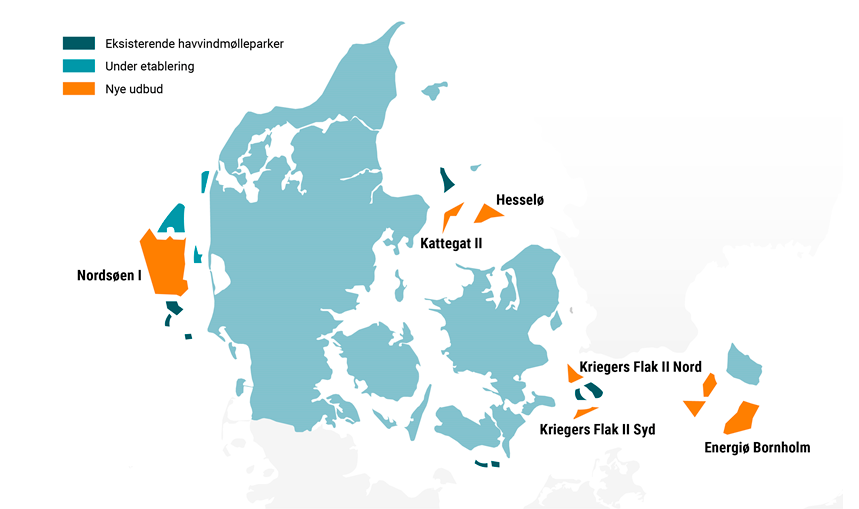The political agreement has been signed on tender frameworks for 6 GW of capacity at the North Sea I (minimum 3 GW), Kattegat II (min. 1 GW), Kriegers Flak II (min. 1 GW), and Hesselø (800 MW–1.2 GW) offshore wind areas, and further 3 GW at the Bornholm Energy Island.
All the capacity must be realised by the end of 2030.

Danish Energy Agency
The Danish Ministry of Climate, Energy and Utilities revealed plans to auction off 9 GW of new offshore wind capacity by the end of this year in February. This target capacity originates from, among other things, the Climate Agreement on green electricity and heat from June 2022 and was concluded by a broad majority in the Danish Parliament before the general election.
Now, through the new political agreement, the so-called “overplanting” option – freedom to set up more offshore wind on the tendered locations than what was agreed in the climate agreement and other political agreements – has been given the green light for projects at North Sea I (Nordsøen I), Kriegers Flak II and Kattegat II areas.
At Hesselø and Bornholm Energy Island, only a more limited overplanting can be permitted, meaning a total capacity of 1.2 GW for Hesselø and 3.8 GW for Bornholm Energy Island.
With overplanting, the 9 GW Denmark aims to procure through this year’s tenders could become 14 GW – and perhaps even more – according to the Danish Energy Agency (DEA).
The DEA is now working to translate the agreed requirements into transparent tender conditions, with an important part of this being the market dialogue that the DEA is currently preparing and plans to open this summer.
The market dialogue will help the Danish Energy Agency get constructive input on the tender material and on how the decided frameworks should be translated into tender material, the DEA says, and will also include the concrete implementation of the newly decided requirements, how to document and conduct supervision, etc.
The preliminary seabed, nature, environment, and other relevant studies are already underway for the new development areas and the DEA is in the process of preparing the tender material.
As mentioned earlier this year, the selected locations for the government tenders do not overlap with the areas to which market players have applied for access under the Danish “open-door” scheme, which is bound to bring even further offshore wind capacity to Denmark’s energy mix.